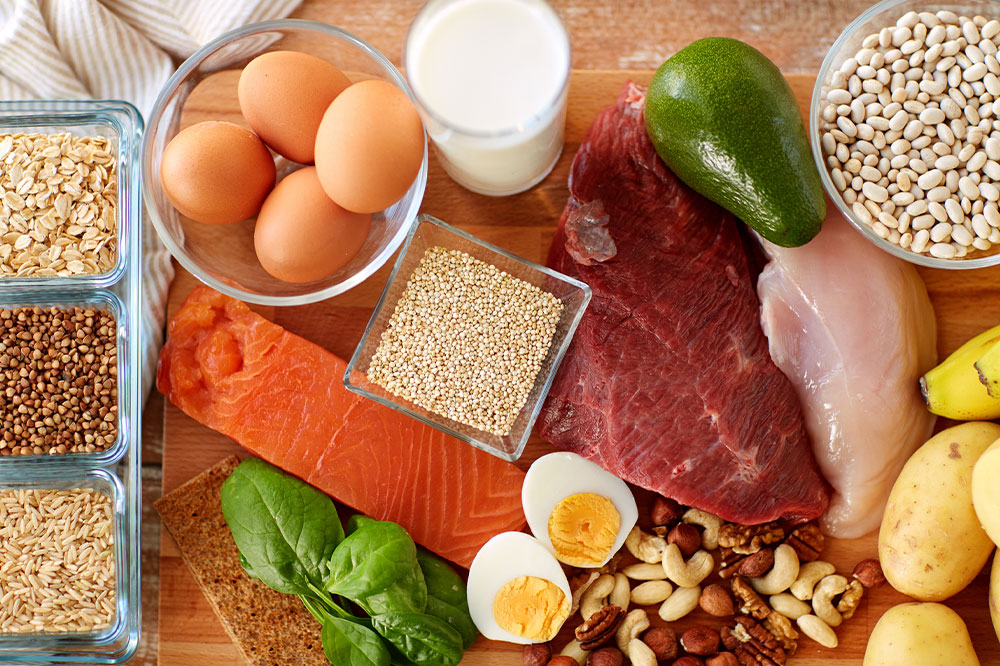Popular Diet Plans to Help Promote Healthy Living
Eating the right kind of food is extremely vital as you derive all nutrients such as vitamins, proteins, carbohydrates, fats, sugars, fatty acids, phytonutrients, etc. from it. You need these elements for physical and mental growth, for the proper functioning of various organs of the body, to derive energy for various bodily functions, and to fight viruses, bacteria, parasites, etc. However, you also need exercise and proper sleep to keep the metabolic activity in perfect rhythm.

The fact is that many people are suffering from this malaise. The reasons for this problem can be attributed to modern lifestyle, food habits, lack of sleep, and lack of exercise. The best and the most fundamental remedy for these problems is a change in diet. You need to have a diet plan in place, which could be the best low carb diet plans or a specific high fiber diet plans to counter the adverse conditions of your health. Let’s learn about some good diet plans so that you can choose one that is most suitable for you.
Low carb diet plans
A low carb diet can become your savior if you are suffering from the vagaries of lifestyle diseases like blood sugar, diabetes, obesity, blood pressure etc. In a low carb diet, your intake of carbohydrates is less. Carbohydrates are broadly divided into three categories—sugar, starch, and cellulose. While sugar and starch provide energy during metabolism, cellulose provides insoluble fibers that help in absorption of water and increase the bulk of stool. All these are very important functions for the body. However, when you consume an excess of carbohydrates or don’t do enough exercise to burn the excess carbohydrates, various health problems start to manifest. In that situation, you need to restrict the number of carbs.
Which foods contain carbohydrates?
Carbohydrates are present in wheat, rice, potato, cereals, rye, corn flakes, barley, biscuits, chocolates, wholemeal, bread, cakes, beans, peas, fruits, carbonated drinks, caffeine, cocoa powder, sweets, alcohol, and much more.
Constituents of low carb diet plans
A low carb diet plan envisages reduced amounts of carbohydrates. So, you need to have measured quantities of various carbohydrate-rich foods.
If you want to go on a low carb diet, you need to limit carbs to a maximum of 30 grams per day. The exact amount depends on the amount of weight you want to lose. You also need to avoid white foods like rice, bread, potatoes, flour, and sugar.
However, a low carb diet is not about just reducing carbs. You also need to increase your protein intake. Make it a part of every meal. Your daily protein intake should be about half a gram of protein for every pound of your ideal body weight. You need to complement the proteins with raw whole food, preferably organic. Also, drink 8 to 12 glasses of water every day to flush out the toxins generated from metabolism in your body.
If you at all need to have oil or butter, then you must choose olive oil, nuts, etc. since this makes better diet plans than including butter and cheese.
High fiber diet plans
Fiber is a very important part of a healthy diet plan. It can improve digestive health and reduce obesity, hypertension, and unnecessary weight gain. It is found only in plant-derived foods. There are two types of them—insoluble and soluble.
Insoluble fiber
This type of fiber absorbs water, helps in increasing bulk of stool, and therefore aids in good bowel movement. You can get insoluble fibers in whole wheat bread, cereals, and bran.
Soluble fiber
This type of fiber dissolves in water and may be helpful in reducing cholesterol in the blood. If you are suffering from constipation, you should increase the quantity of soluble fiber. You can get soluble fibers in oats, rye, barley, fruits like banana and apple, root vegetables like carrot and potato, etc.
A high fiber diet plan must include at least 30g of fiber per day. This includes both soluble and insoluble fibers. For children, the recommended amount depends on his/her age. For 2–5-year-old children, it is about 15g per day; for 5–11-year-old children, it is about 20g per day; for 11–16-year-old children, it is about 25g per day; and for 16–18-year-old children, it is about 30g per day.
Moreover, if you follow a high fiber diet plan, you feel fuller for longer. This may help you lose weight by reducing your food intake. However, you should increase the intake of fiber only gradually as a sudden increase in fiber consumption may make you feel bloated.

